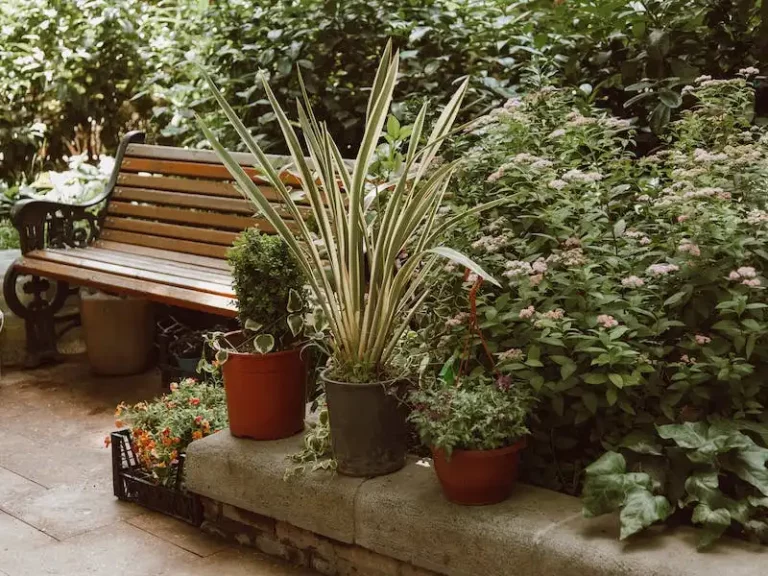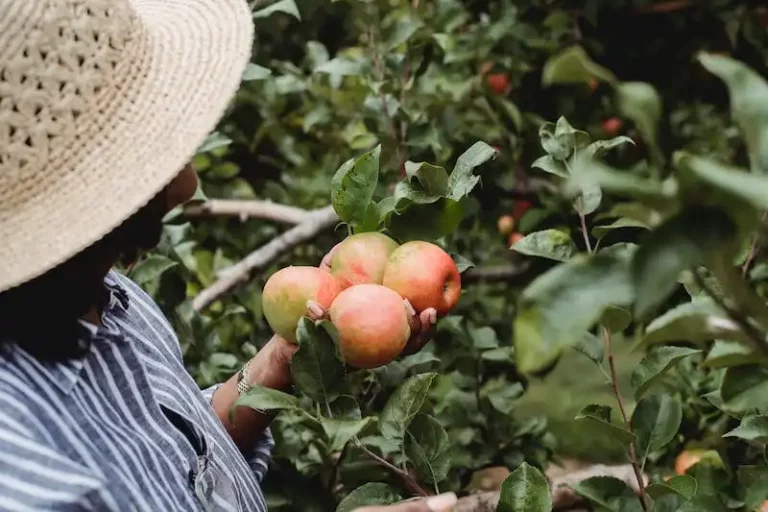Staghorn ferns are a unique piece of nature that can add a touch of exotic beauty to any garden or indoor space. These plants have specific requirements for their growth, making them a fascinating guide for avid gardeners. Once planted, staghorn ferns do not need much care or maintenance, making them a convenient choice for those with busy schedules.
In their natural habitat, staghorn ferns are typically found growing on trees or rocks. In the case of growing them in pots, it’s important to provide a suitable growing medium and support. Staghorn ferns are sensitive to over-watering, so it is crucial to soak their root fiber thoroughly without leaving any water standing. Another important aspect to consider is the temperature of the habitat. Staghorn ferns are native to warm and humid environments, so it is best to keep them in a small, overhead watering pot or to regularly mist the leaves to maintain the required humidity level.
Propagating staghorn ferns is a specific and gradual process. The plantlets, known as spores, can be collected from the fronds and placed on a suitable medium until they start to develop themselves. Ensuring that the plantlets are placed on a slightly damp surface and misting them regularly will help them grow into new ferns within a few months.
Staghorn ferns can be a refreshing alternative to other plants. By placing them on a cedar plank, the plant’s absorption power is enhanced, promoting a healthier growth. It’s important to remember to water them regularly, as they require moist, not wet, conditions. By following these steps and providing the necessary care, your staghorn fern will thrive and add a unique touch to your garden or indoor space.
Staghorn Fern Care: Mastering This Exotic Easy-to-Grow Conversation Piece
If you’re looking for an exotic and easy-to-grow conversation piece, the Staghorn Fern is the perfect choice. With its unique elkhorn-like shape and fascinating fronds, it’s sure to be a showstopper in any room or garden.
When it comes to care, the Staghorn Fern has a few specific requirements. Firstly, it prefers to be grown in a well-draining mix, such as a combination of soil and fiber. Placing it in a fertile potting mix with good drainage is essential to keep its roots happy.
In terms of light, the Staghorn Fern is an adaptable plant. It can tolerate both bright, indirect light as well as some shade. However, it’s best to monitor the light levels and adjust accordingly, as too much or too little light can affect its growth.
Humidity is another important factor that the Staghorn Fern’s care requires. As a native of Australia, it thrives in high humidity environments. Regular misting or placing the plant on a tray with water can help maintain the humidity levels it needs.
When it comes to pruning, the Staghorn Fern is relatively low-maintenance. You can trim away any brown or dying fronds to keep it looking tidy. However, be sure to use clean shears to avoid spreading any diseases.
The Staghorn Fern can be planted on a mount, such as a piece of cedar, or in a hanging basket. This allows its beautiful heart-shaped fronds to cascade down, creating a stunning display. You can also use an alternative to a mount, such as a coconut fiber-lined basket, for a more natural look.
Staghorn Ferns are generally easy to care for, but they do have some specific characteristics that you should be aware of. They are sensitive to overwatering, so it’s important to let the top layer of soil dry out between waterings. Additionally, they are cold-sensitive and should be kept away from drafts or extreme temperatures.
In summary, Staghorn Fern care is relatively straightforward. With the right combination of light, humidity, and pruning, you can keep this gorgeous plant thriving for years to come. Follow our guide and use these tips to ensure your Staghorn Fern remains a great-looking conversation piece.
Follow these tips for great-looking stag plants with gorgeous foliage
Staghorn ferns, botanically known as Platycerium, are fascinating and unique plants that make a stunning addition to any indoor or outdoor garden. To keep your staghorns looking their best, follow these simple tips for fertilization, propagation, and care.
Fertilization:
Stag plants should be fertilized regularly throughout the growing season, typically once a month. Use a balanced fertilizer solution and apply it directly to the fronds and basal plaques. This will provide the necessary nutrients for healthy growth and vibrant foliage.
Propagation:
Staghorns can be propagated by division or spore propagation. Division involves carefully separating the offsets or pups from the mother plant and replanting them in a separate container. Spore propagation can be a more difficult and time-consuming process, but it allows for the reproduction of new plants. Regardless of the method chosen, it’s important to be patient with propagating staghorns, as they can take some time to establish themselves.
Mounted or potted:
Staghorn ferns are epiphytic plants, meaning they naturally grow on trees or other surfaces. They can be mounted on wooden plaques or grown in pots filled with well-draining soil. Both methods can work well, but mounted staghorns require more frequent watering and a humid environment. Potted staghorns should be watered when the top inch of soil feels dry and placed in a spot with bright, indirect light.
Clean and pest-free:
Regularly cleaning the fronds of your staghorn fern is vital to maintaining their health and beauty. Use a soft brush or damp cloth to gently remove any dust or debris from the leaves. Keeping the plant clean also helps prevent pests, such as mealybugs and scale, from infesting the foliage. If pests are present, apply an appropriate pest control solution and remove any affected fronds.
Indoor care:
Staghorn ferns can be grown indoors successfully, but they require specific conditions to thrive. They prefer warmer temperatures, ideally between 65-80°F (18-27°C), and high humidity levels. If humidity is low, consider using a humidifier or placing the plant on a tray filled with water and pebbles. Avoid placing the plant near heating or cooling vents, as drastic temperature changes can be harmful.
Pruning and safety:
As staghorn ferns grow, the older fronds may turn brown and die off. These should be removed with clean pruning shears to maintain the overall appearance of the plant. Be careful when handling staghorns, as their fronds can be sensitive and easily damaged. It’s also important to practice safety when mounting or working with the plants, wearing gloves and taking necessary precautions to avoid injuries.
By following these tips, you can ensure that your staghorn ferns have gorgeous foliage and remain healthy. Whether you choose to grow them indoors or outdoors, these easy-to-grow plants will bring a touch of natural beauty to any space.
Staghorn Fern Care at a Glance
Staghorn ferns are easy-to-grow plants that add beauty to any indoor or outdoor setting. However, they do have specific care requirements to ensure they thrive and produce their best. Here are some important facts to keep in mind when caring for your staghorn fern.
Water: Staghorn ferns typically need to be watered about once a week. The best way to water them is to thoroughly moisten the planting material and allow any excess water to drain out. It’s important to water the base of the plant and avoid watering the fronds or the center of the “nest” where the fronds emerge.
Temperature: Staghorn ferns prefer to be kept in warm temperatures, around 65 to 75 degrees Fahrenheit (18 to 24 degrees Celsius). They can be kept outside during the summer months, but should be brought indoors during colder weather.
Light: Staghorn ferns need bright, indirect light. They should not be placed in direct sunlight, as this can scorch their fronds. It’s best to place them in a location where they receive bright, filtered light throughout the day.
Soil: Staghorn ferns are epiphytes, which means they naturally grow on other plants or surfaces. They do not require soil to grow, but rather prefer a well-draining planting material, such as sphagnum moss or cactus mix.
Mounting: Staghorn ferns can be mounted on a piece of wood or other suitable surface, allowing the plant to grow and attach itself over time. This is a popular method of displaying staghorn ferns and gives them the opportunity to grow as they would in their natural habitat.
Propagation: Staghorn ferns can be propagated by dividing the basal fronds, or by starting new plants from spores. Both methods require a patient and careful approach, but can result in new plants.
Care: Staghorn ferns are relatively low-maintenance, but they are susceptible to certain pests, such as scale insects. Regularly inspect the fronds and undersides of the leaves for any signs of pests and take appropriate action if necessary.
By following these simple care instructions, you can ensure that your staghorn ferns stay healthy and thrive for years to come!
Staghorn Fern Characteristics
Staghorn ferns, also known as Elkhorn ferns, are unique and beautiful plants commonly grown as houseplants. They get their name from their long antler-like fronds, which resemble the horns of a deer or elk. These ferns are native to rainforests in Australia and other tropical regions, and they have certain characteristics that make them stand out from other plants.
| Characteristics | |
|---|---|
| Size | Staghorn ferns can grow to be quite large, with some reaching up to 3 or 4 feet in width. The fronds can also grow quite long, ranging from a few inches to several feet in length. |
| Shape | The fronds of staghorn ferns are slender and heart-shaped, with a rough texture on the surface. They are typically green in color, but some varieties may have a slight red or brown hue. |
| Propagation | Staghorn ferns can be propagated by spores, which are tiny reproductive cells. This process can be time-consuming and takes careful attention to detail. Another alternative is to remove a basal plantlet and attach it to a wooden plaque or a basket filled with moss. |
| Lighting | Staghorn ferns prefer bright, indirect lighting. They should be placed in a spot that receives filtered sunlight for at least half of the day. Avoid exposing them to direct sunlight, as it can burn their fronds. |
| Humidity | Staghorn ferns are humidity-loving plants, and ensuring high humidity levels is essential for their well-being. They thrive in environments with humidity levels around 50-60%. To increase humidity, you can mist the fronds regularly or place a tray of water near the plant. |
| Soil | Staghorn ferns do not grow in soil like most plants. Instead, they attach themselves to trees or trunks and absorb nutrients and moisture from the air. When grown in a basket or mounted on a plaque, they are usually potted in a medium that retains moisture, such as sphagnum moss or a mixture of orchid bark and peat moss. |
| Feeding | Staghorn ferns can be fed with a balanced, water-soluble fertilizer. However, they are not heavy feeders, and overfeeding can lead to leaf burn or other potential diseases. Follow the instructions on the fertilizer package and be careful not to exceed the recommended dosage. |
| Disease | Staghorn ferns are generally disease-resistant, especially when grown in optimal conditions. However, they can be susceptible to several diseases if not properly cared for. Some common diseases that may affect staghorn ferns include scale insects, mealybugs, and fungal infections. Regularly inspect your fern for any signs of disease and take appropriate steps to treat it if necessary. |
Growing staghorn ferns can be a rewarding experience for both experienced and novice gardeners. While they do require some specific care, the beauty and uniqueness of these plants make them worth the effort. Take the time to learn about their characteristics and provide them with the right growing conditions, and you’ll be rewarded with a stunning addition to your indoor or outdoor garden.



